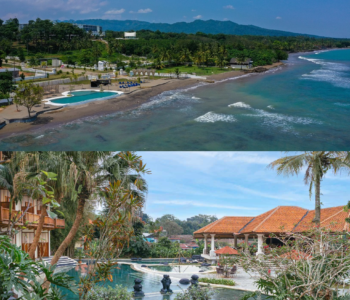The earthquake and tsunami it triggered on 28 Sept in Palu, Central Sulawesi caused death and destruction of immense magnitude. Hundreds were reported killed in the immediately aftermath, with the number increasing to the thousands according to the Indonesian National Board for Disaster Management(BNPB). Natural disasters can’t be prevented but what can be done to stem their impact?

Waves up to 3m high swept through Palu on Sulawesi island. Homes collapsed, as did hospitals, shopping centres and places of worship. The disaster was exacerbated by liquefaction that occurred in the hours that followed,
Rescue efforts were hampered by the devastation, which knocked out power lines, bridges, and damaged airport infrastructure.
Indonesia was initially reluctant to accept foreign aid, but later, President Joko Widodo agreed to assistance after seeing the true scope of the devastation. Since then, more than 25 countries have offered help, and the United Nations pledged USD 15 million to the relief effort. Planes and trucks were then able to get to Palu, albeit slowly, to deliver urgently needed items including tarpaulins, shelter kits, food, water, and medical supplies — and to help evacuate survivors. Other organisations, such as Save the Children sent a team to help carry supplies.
Warning
Indonesia's tsunami early warning system is currently made up of a network of 170 seismic broadband stations, 238 accelerometer stations and 137 tidal gauges.
Many critics have accused the Agency for Meteorology, Climatology and Geophysics (BMKG) of lifting the warning too early, though the agency says the waves hit while the warning was still in force.
But according to BMKG's head of earthquake and tsunami centre, the current system in place is "very limited".
National Disaster Mitigation Agency (BNPB) spokesman Sutopo Purwo Nugroho told media that Indonesia had been having problems installing real-time tsunami detection equipment since 2012.
But there's a bigger problem – though the alert was sent out, and according to the communications ministry, repeated tsunami warnings were sent to residents via text message – they might not have been received.
What next?
Critics say that, despite improvements at a national level in disaster management since a devastating Indian Ocean tsunami in 2004, local authorities often lack know-how and equipment, and so rescue efforts were delayed until the military could reach the area.
Further education and drills may help stem more disastrous effects of these situations, experts say. It is just as important to raise awareness of disaster response at schools and in villages, while highlighting the need for trauma counselling, especially for women and children,who according to UN reports are 14 times more likely than men to die during a natural disaster, it has been reported.
Palu was Indonesia’s second earthquake disaster of 2018. In August, the island of Lombok was rocked by quakes that flattened villages and killed more than 500 people, which gives reason to doubt a speedy recover. No one knows what might come of the aid that has been distributed and if these communities will be able to rebuild.
Search-and-rescue operations ended in mid October.
In the words of a recent report, the missing are deeply buried and likely decomposed beyond recognition. The survivors are left to try to make sense of the cataclysm and wonder what could be done better next time.






